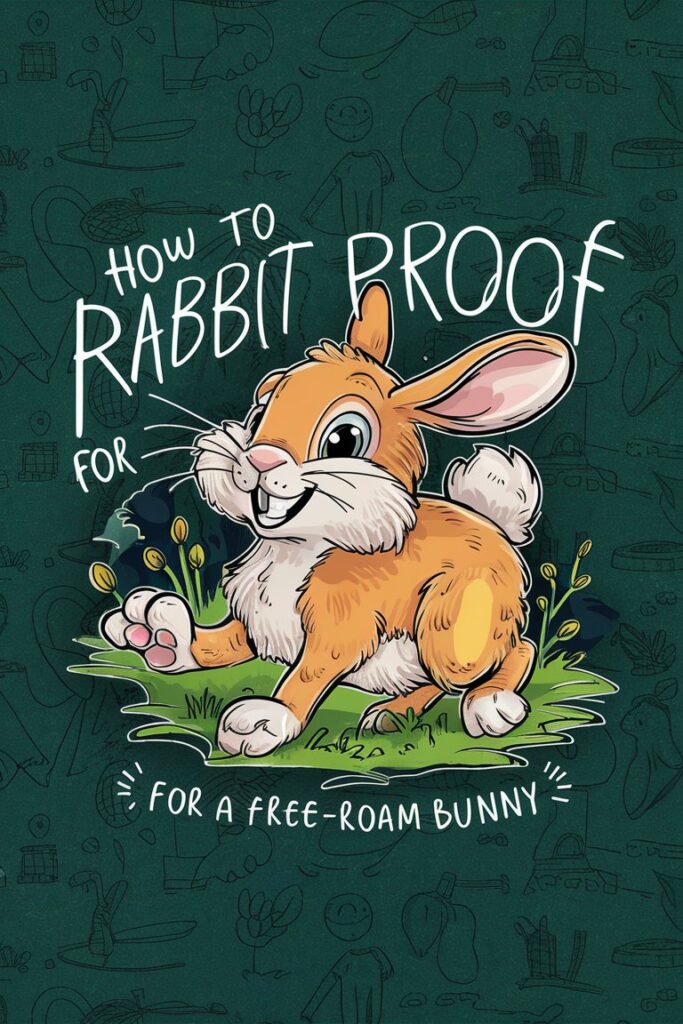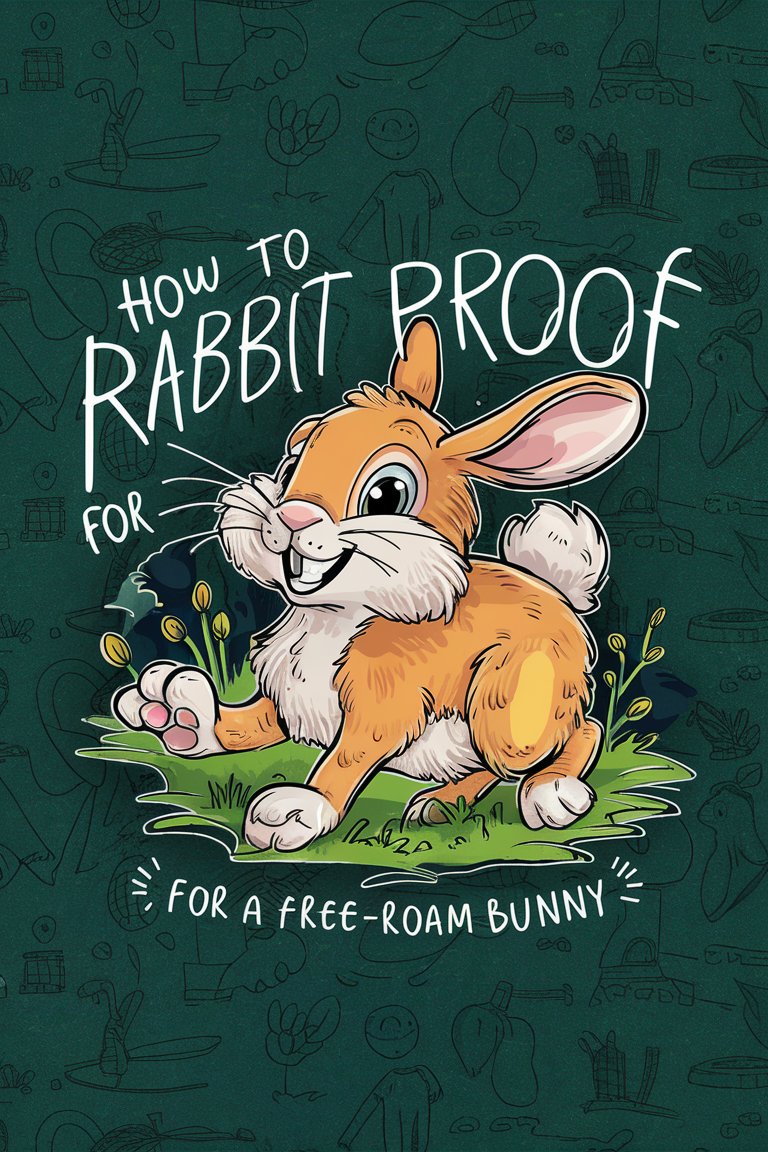How to Rabbit Proof for a Freeroam Bunny
Allowing your rabbit to roam freely through your home can be incredibly rewarding, creating a more intimate bond with your pet. However, due to their naturally inquisitive dispositions, rabbits can easily get themselves into compromising situations.
Therefore, it’s imperative to take the appropriate steps to make sure you, your home, and your rabbit are properly prepared before allowing free roaming. This guide will walk you through the necessary precautions to make the free roam experience as safe as possible for your bunny.

Key Takeaways
- Thoroughly rabbit-proof your home by securing electrical cords and blocking off hazardous areas.
- Provide safe chew toys to keep your bunny occupied and away from dangerous objects.
- Use pet gates, playpens, and furniture leg covers to set up bunny-proof barriers.
- Take outdoor precautions such as fencing the garden and checking for toxic plants.
- Monitor your bunny’s behavior and reward good behavior to encourage safe habits.
Creating a Safe Environment
When it comes to bunny safety first, we need to ensure that our homes are as bunny-proofed as possible. This process allows our furry friends to get used to the new sounds, sights, and smells of their new home in the safety of their new cage.
It will become their safe haven. They will quickly learn that in this particular area (their cage) they are not disturbed. This is why they should not be petted inside the cage. It should be their safe haven.
Securing Electrical Cords
One of the first steps in creating a safe environment is securing electrical cords. We can do this by keeping loose wires and cords picked up and safely tucked away.
A cage and free-roam setup is great for those rabbits who are not known to be super-destructive of household property. If your rabbit has a taste for baseboards, consider using cord protectors or hiding cords behind furniture.
Blocking Off Hazardous Areas
We can block off access to certain rooms with metal playpens or baby gates. This helps in keeping our bunnies away from areas that are too dangerous or contain plants or furniture that would be best kept away from curious little mouths.
Sometimes, placing a sturdy rug or woven grass mat in the corners of the room can discourage digging.
Providing Safe Chew Toys
Providing safe chew toys is essential for keeping our bunnies entertained and away from chewing on household items.
We can offer a variety of toys such as wooden blocks, hay-based toys, and cardboard. This not only keeps them busy but also helps in maintaining their dental health.
Setting Up Bunny-Proof Barriers
Installing Pet Gates
When it comes to bunny-proofing, installing pet gates is a great way to limit the space first and see how it goes.
These gates help us create a safe environment by restricting access to certain areas. Make sure the gates are tall enough so your rabbit cannot jump over them.
Using Playpens
Playpens are another excellent option for setting up bunny-proof barriers. They allow us to create a designated area where our bunnies can roam freely without getting into trouble.
It’s important to fully bunny-proof the place where the rabbit will be roaming. This means ensuring there is nothing that they can get under or over that could possibly harm them.
Covering Furniture Legs
Rabbits love to chew, and furniture legs are often a target. To protect our furniture, we can cover the legs with materials that are safe for bunnies to chew on.
This not only saves our furniture but also provides a safe outlet for our bunnies’ natural chewing behavior.
Outdoor Precautions
When it comes to letting our bunnies enjoy the great outdoors, bunny safety first! We need to take several precautions to ensure they can explore without any risks.
Supervision and Training
Monitoring Bunny’s Behavior
For those of you with indoor rabbits, it’s crucial to keep a close eye on them. Supervision is key to ensuring they don’t get into trouble.
We should always be alert to any signs of mischief, like chewing on the carpet or furniture. When we can’t supervise them, it’s best to keep them in their enclosure to keep them safe.
Teaching Boundaries
Training a rabbit can be simple if we are consistent. We need to set clear boundaries and reinforce them regularly.
For example, if our bunny starts chewing on something they shouldn’t, we should gently redirect them to a safe chew toy. Over time, they’ll learn what’s acceptable and what’s not.
Rewarding Good Behavior
Positive reinforcement works wonders with rabbits. Whenever our bunny follows the rules or uses their litter box correctly, we should reward them with a treat or some extra playtime.
This encourages them to repeat the good behavior and makes training a more enjoyable experience for both of us.


